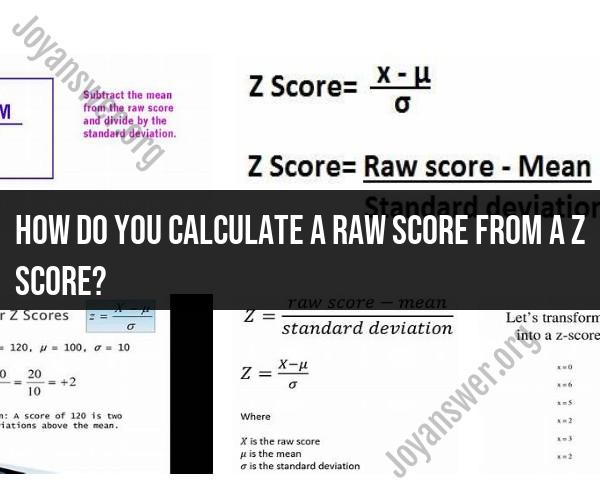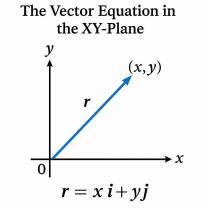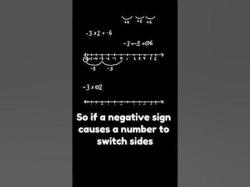How do you calculate a raw score from a z score?
To calculate a raw score from a z-score (standard score), you can use the following formula:
Raw Score (X) = (Z-Score (Z) * Standard Deviation (σ)) + Mean (μ)
Where:
- X is the raw score you want to find.
- Z is the z-score.
- σ (sigma) is the standard deviation of the data set.
- μ (mu) is the mean (average) of the data set.
Here are the steps to calculate a raw score from a z-score:
Gather Information:You need to know the z-score you want to convert into a raw score, the standard deviation of the data set, and the mean (average) of the data set. These values should be provided or available from your data.
Plug in the Values:Insert the values into the formula:
Raw Score (X) = (Z-Score (Z) * Standard Deviation (σ)) + Mean (μ)
Perform the Calculation:Calculate the raw score by multiplying the z-score by the standard deviation and then adding the mean.
Interpret the Result:The calculated raw score represents the data value associated with the given z-score. It tells you where the z-score falls within the distribution of the data.
Here's an example:
Suppose you have a z-score of 1.5, a standard deviation of 10, and a mean of 50 for a dataset. You want to find the corresponding raw score.
Raw Score (X) = (1.5 * 10) + 50 = 15 + 50 = 65
So, a z-score of 1.5 in this dataset corresponds to a raw score of 65.
Converting z-scores to raw scores is useful in statistics when you want to understand the actual data value associated with a particular level of deviation from the mean.











